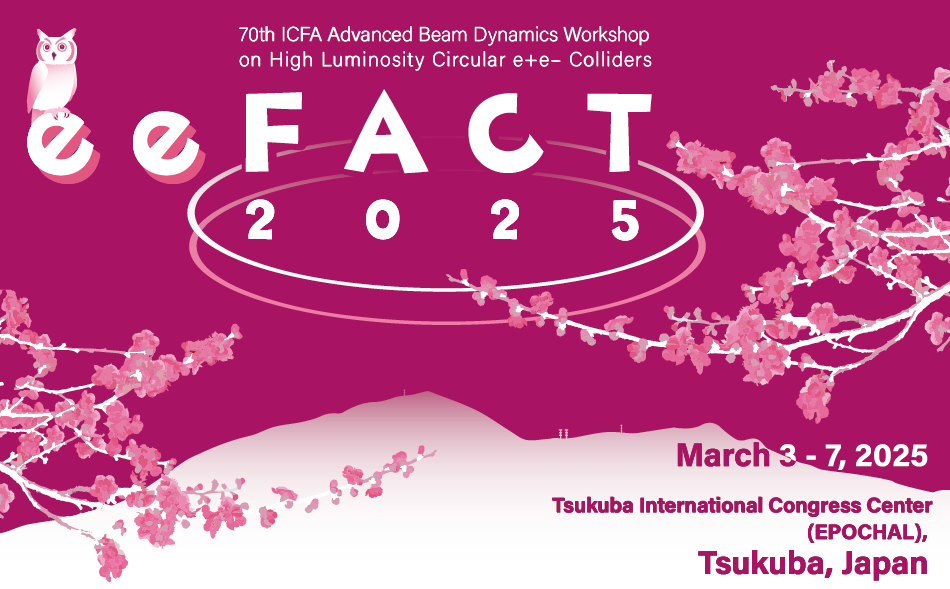SuperKEKB accelerator is one of the world's highest luminosity collider with electron-positron asymmetric collision, which is aiming at 10 times higher luminosity than that KEKB achieved. In order to obtain the target luminosity, it is designed to store the unprecedented high current beams of 2.6 A and 3.6 A in the electron and positron rings, respectively. In this talk, concerns about RF...
Abstract to be delivered soon (Needed ID for registration)
The HL-LHC beams are accelerated to their nominal energy of 7 TeV by the existing 400 MHz superconducting RF system of the LHC. A novel superconducting RF system for transverse deflection (aka crab cavities) will be used to compensate the geometric loss in luminosity due to the non-zero crossing angle and the extreme focusing of the bunches in the HL-LHC.
The highlights of the crab cavity...
Beam dynamics during acceleration are inherently sensitive to numerous external factors, particularly within superconducting linear accelerators. In such systems, the high-Q superconducting RF cavities are especially vulnerable to instabilities caused by unforeseen disturbances, which can significantly degrade beam quality or even lead to beam loss. The low-level RF (LLRF) control system,...
A compact TM020-mode RF cavity has been proposed and studied by KEK and RIKEN for storage ring of Nano-terasu facility. However, the leakage power of the accelerating mode into the coaxial slots is an issue to limit its performance. This paper presents an improved TM020-mode cavity in order to solve this issue. By employing el-liptical choke, the leakage can be significantly reduced. Harmful...
The International Linear Collider (ILC) is a future electron-positron collider based on superconducting radio frequency (SRF) technology, planned to be situated in Japan. In this contribution an introduction to the ILC is given, followed by a report on the status of the ILC Technology Network (ITN). Furthermore, an overview of the current cryomodule development at KEK as well as of the...
High-efficiency klystrons are a key component for the operation of next-generation particle colliders such as the Future Circular Collider - electron-positron (FCC-ee), the Compact Linear Collider (CLIC), the Large Hadron Collider (LHC), and the Circular Electron Positron Collider (CEPC). These high-power RF sources provide the essential energy required for particle acceleration and beam...

